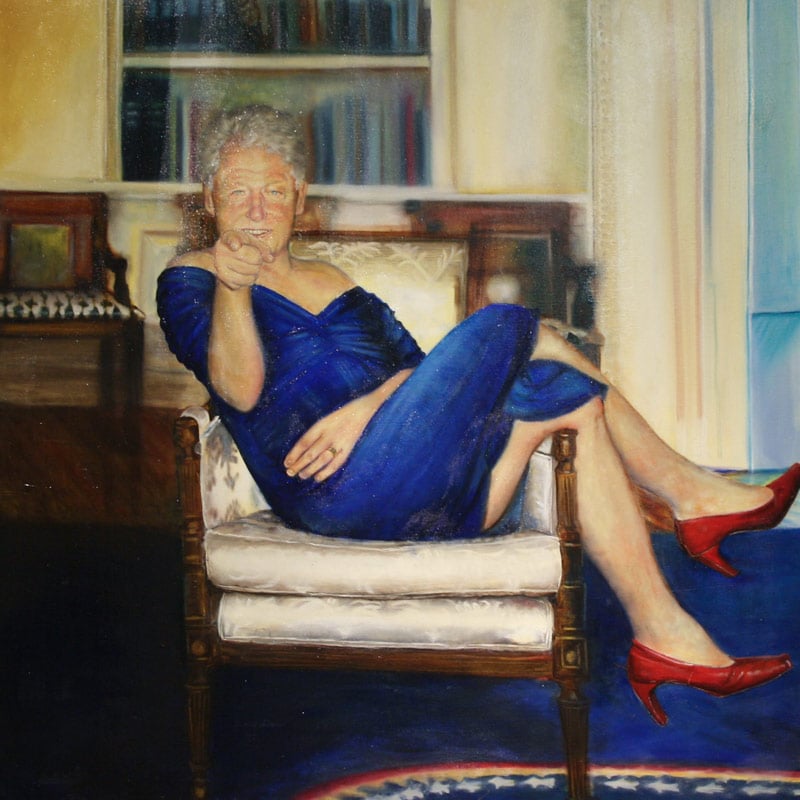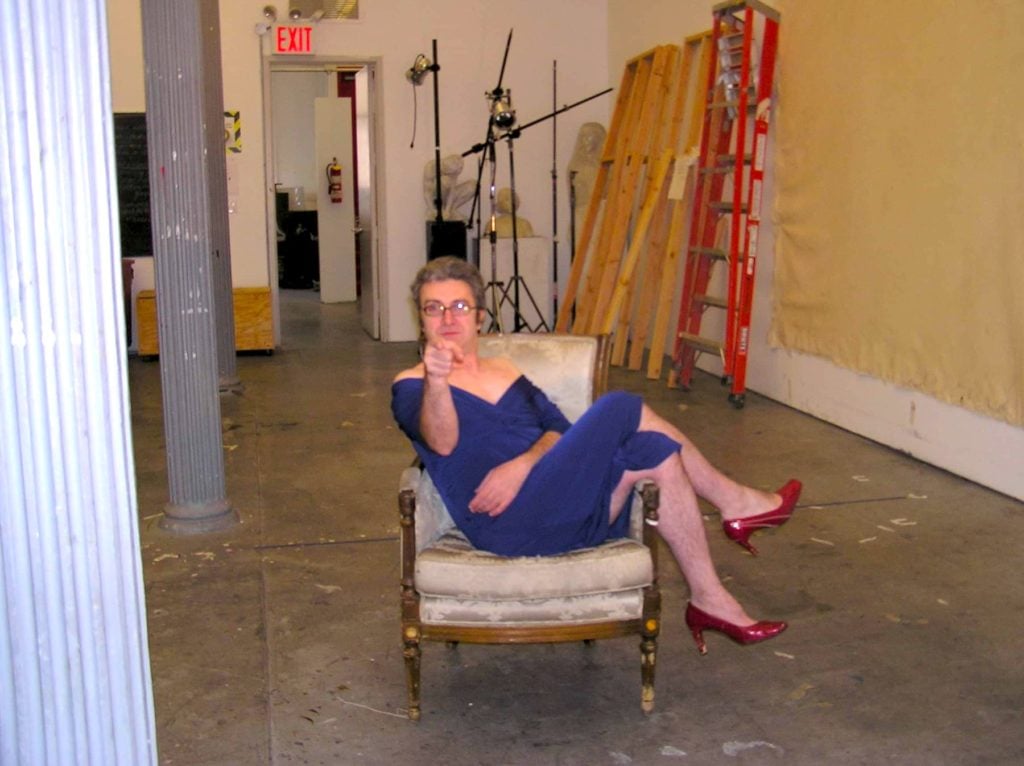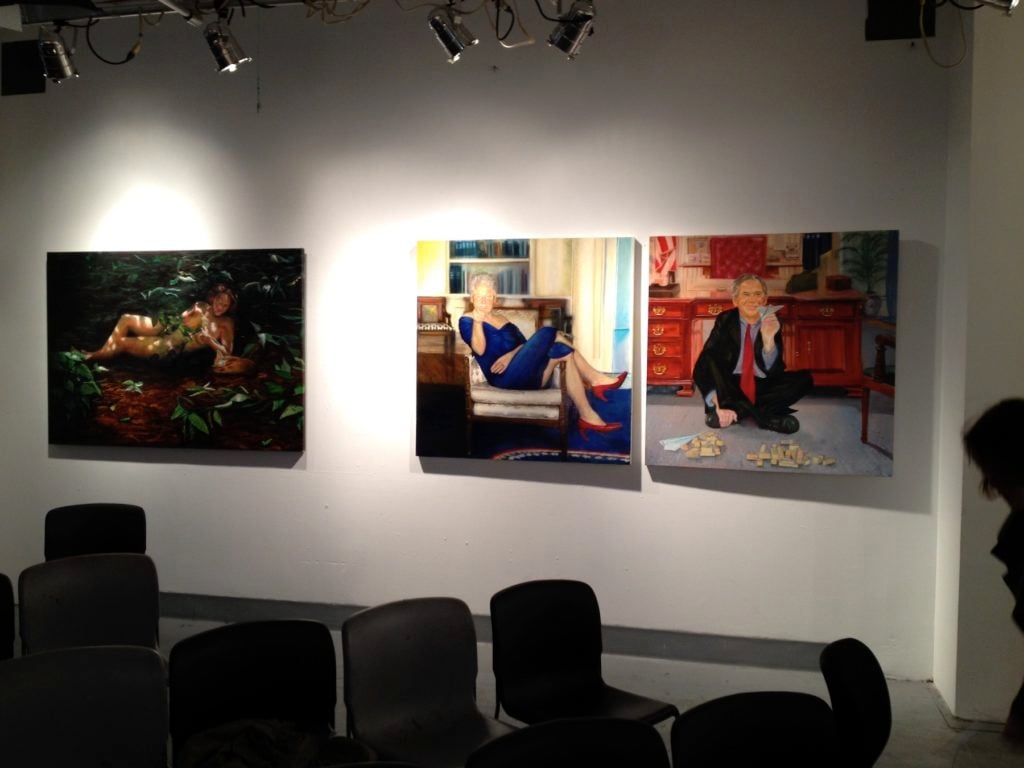Politics
The Artist Who Painted Jeffrey Epstein’s Portrait of Bill Clinton in a Dress Tells Us Why She Made It, and What It Means
Petrina Ryan-Kleid wants to clear up a few things about the image.

Petrina Ryan-Kleid wants to clear up a few things about the image.

Ben Davis

What is it like for an artist to go viral overnight, and suddenly find herself part of a political narrative that she has no control over?
This is the reality for Petrina Ryan-Kleid, whose painting of Bill Clinton incongruously clad in a blue dress suddenly was scrutinized across the internet last week after the Daily Mail revealed that it had been owned—and prominently displayed—by Jeffrey Epstein, the billionaire convicted pedophile who recently died by suicide in New York.
Ryan-Kleid says that she has been overwhelmed amid the week’s frenzy of attention. She spoke to artnet News over the weekend by email to clarify some misinterpretations circling around the now-viral image, which she developed as a student, having recently arrived in the United States from Australia.
“I live a quiet life, and I really just had a naive, newly arrived foreigner’s idea for a thesis,” she writes of the painting, known as Parsing Bill, and its companion painting of George W. Bush playing with blocks and paper airplanes called War Games. “It was just a silly school artwork that was supposed to show, pictorially, the messages we are bombarded with in regards to these presidents.” She confirms that the blue dress is a reference to Monica Lewinsky’s blue dress, a prominent piece of evidence in Clinton’s affair with his former intern.
Today, Ryan-Kleid says she actually feels bad about the content of the painting. “Since I’m Australian, I wasn’t then, nor am I now, partisan about American politics,” she writes. “At the time, most of my ideas were fresh from the Daily Show or from Australian cable TV.”

Petrina Ryan-Kleid, Parsing Bill (2012). Image via the New York Academy of Art.
One thing that seems clear is that the painting of Clinton is not about making fun of the idea of a man wearing a dress, any more than her painting of Bush is about making fun of a man playing with children’s toys. Parsing Bill and War Games are both about “how opposition parties caricature presidents,” Ryan-Kleid emphasizes. “Neither painting should be taken literally.”
Ryan-Kleid got her MFA in 2012 from the New York Academy of Art. The painting of Clinton was purchased from the 2012 Tribeca Ball, a fundraiser for the school, though she said that she hadn’t been aware of who bought it. She believes it sold for about $1,300.
The New York Academy of Art specializes in traditional figurative painting, but encourages its students to explore a wide range of subject matter with those skills. Her pair of paintings of US presidents is a product of that training.

Model Christophe Nayal posing for Petrina Ryan-Kleid’s Parsing Bill (2012). Image courtesy Christophe Nayal.
For the Clinton painting, Ryan-Kleid worked with Christophe Nayel, a model who has posed for the New York Academy of Art since 2001. Nayel, who was vacationing in his native France when the seven-year-old student painting went viral, recalled that Ryan-Kleid had been an “absolute joy” to work with, and said that he, too, had been blown away by the way that Parsing Bill had resurfaced.
“I was absolutely stunned to find out that Epstein bought her painting during a major event at the school,” he told artnet News in a Facebook message. “Some past students even recognized my legs in that painting.”

Installation view of Petrina Ryan-Kleid thesis show at the New York Academy of Art. Image courtesy Petrina Ryan-Kleid.
News outlets were able to connect the Clinton image back to Ryan-Kleid because she had posted it to the Saatchi Art website, which allows artists to sell prints of artworks directly to consumers. The fact that it was there, it turns out, is something of a fluke. “I was trying out that Saatchi site years ago, in 2013, and the only uploadable photo I had at the time was Bill,” the artist explains.
Since the explosion of interest in the work, Ryan-Kleid tried unsuccessfully to have the listing taken down, but the system was unresponsive (possibly because of the volume of traffic, she speculated). She estimates that between 100 to 150 people have bought copies of the print since it went viral. “Saatchi takes most of the money, but apparently I am owed about $14 per print,” she says.
Ryan-Kleid adds that she feels uncomfortable about the new demand for the work, however. She hasn’t yet decided whether she will keep the money.
More Trending Stories:
Jameson Green Won’t Apologize for His Confrontational Paintings. Collectors Love Him for It